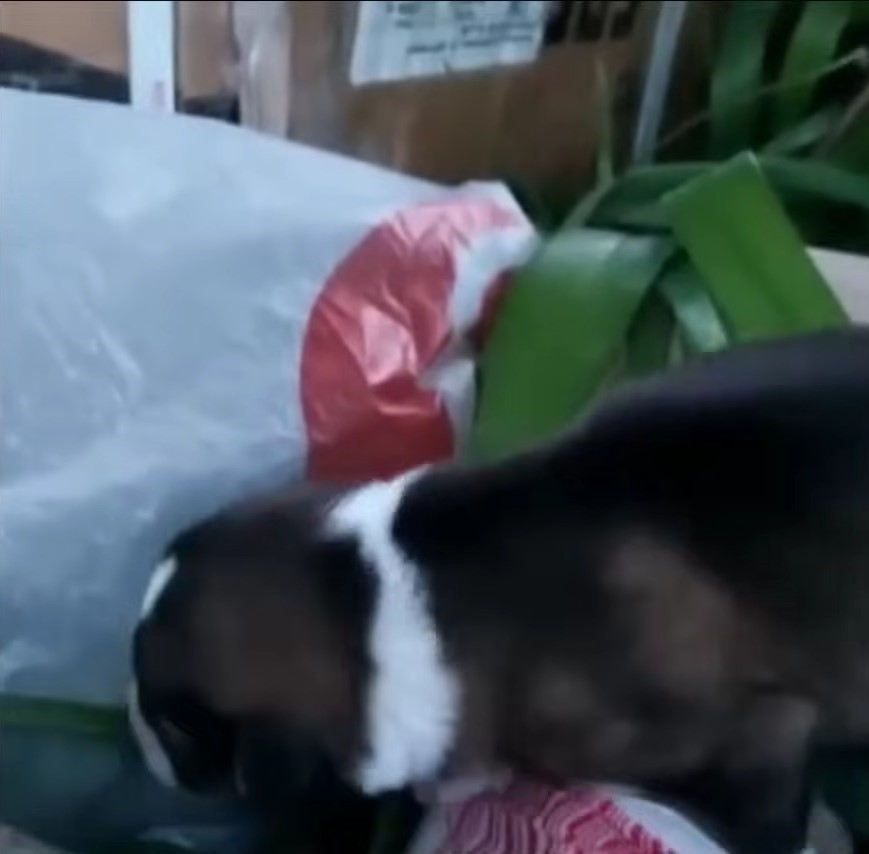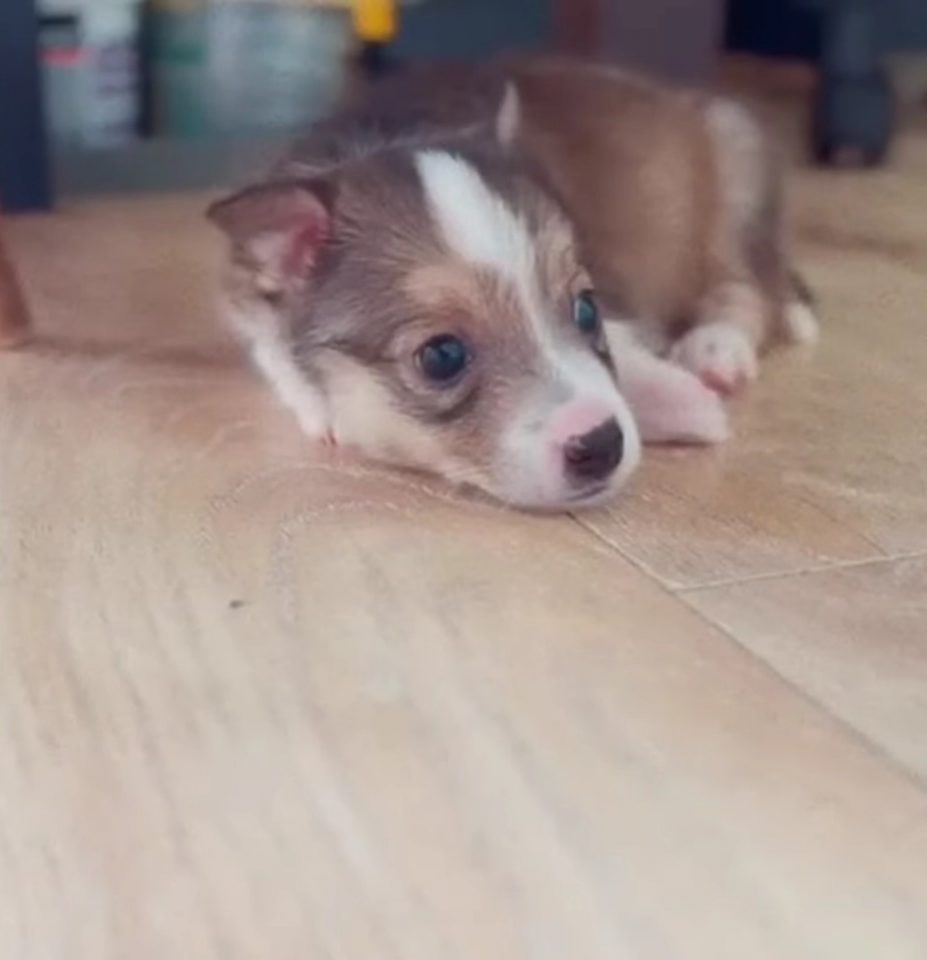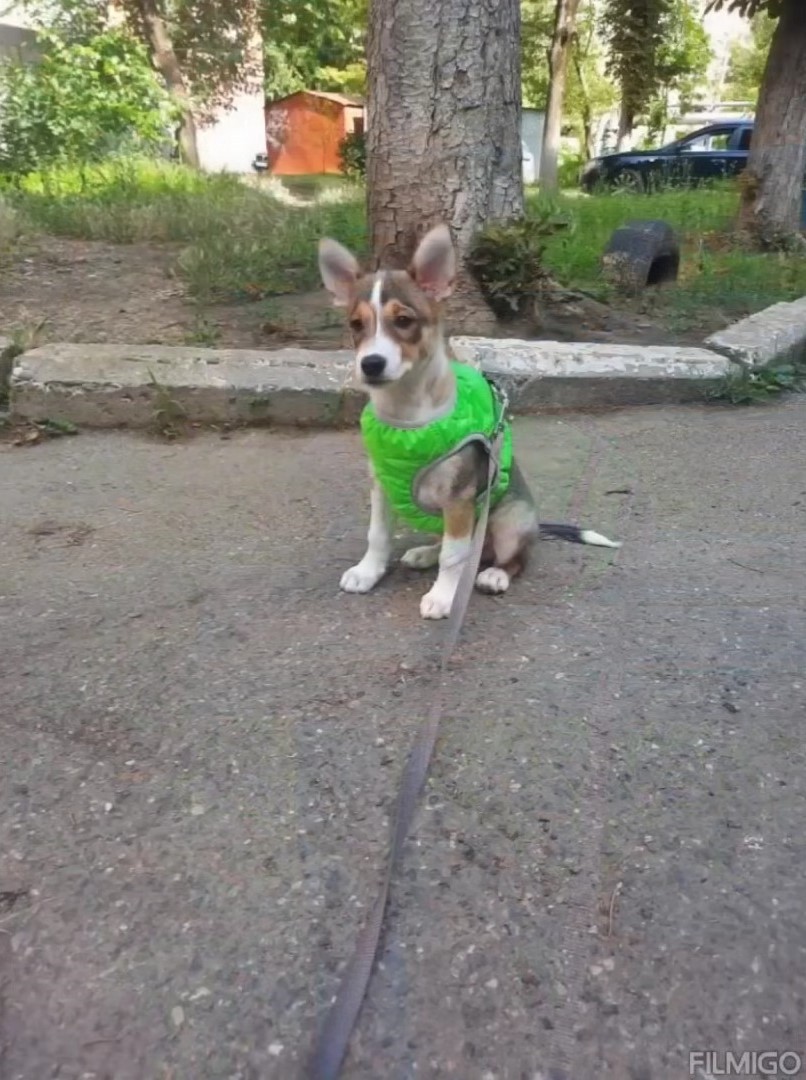It comes as no surprise to anyone that being a dog rescuer is a really difficult job at times. On one hand, you see the worst of humanity in it.
And, on the other, you can see the best. Those two sides are often conflicted, and it’s hard not to think negatively about these things when you see it so much.
However, it’s not so black and white. We all have to collectively work more on ourselves and help everyone realize that these problems exist and they have a solution.
Every dog can have a home, and when you think about it, sometimes all it takes is a simple phone call to the right person.
In this story, we will talk about a puppy who was abandoned in a trash bin and left to starve, but his rescuers were there to save him.
Puppy Was Thrown In Trash

When Kimchik was first found, it was thanks to one brave rescuer making a phone call to a friend of hers who was an animal rescuer.
A rescuer came in no time to find that somebody had actually left this puppy in the trash, and she realized that he was trying to find food inside.
It was a heartbreaking sight. I just don’t understand people who would do something so cruel to a defenseless animal. He didn’t do anything to deserve this.
Upon taking him, she realized that the puppy couldn’t have been more than a day old and was not going to survive for long unless she helped him.

After saving him, his rescuer did her best to give him everything he needed. Kimchik needs constant attention in order to survive.
After about 10 days, things were already different, and he was beginning to be a lot more lively. His tail was wagging constantly, and he even met other residents in the house.
He didn’t seem scared of anyone, and it was apparent through his behaviour that he just liked to be around people and dogs all the time.
A Road To A New Life

Some more time had passed and Kimchik was taken to a clinic for a checkup, where he also received his vaccinations.
He was then given a nice and warm bath. While he was a bit scared of the water at first, he relaxed completely later on and just loved taking a long nap afterwards.
Kimchik was becoming a big boy, so his foster mom decided to buy him some toys and he would play with them all the time.
They would also go shopping together and it was an amazing experience for both of them, but especially for Kimchik.

He loved exploring his surroundings and going on walks. With each passing day in his new life, he became more outgoing and cheerful.
This was amazing as it meant that he was now ready to be placed on an adoption list so he could find his forever home.
It should come as no surprise that this sweet puppy didn’t have to wait long to meet his new parents, who were also happy to see him.
He now also has a dog sibling with whom he can play all the time and go on adventures. Kimchik is so happy to be in his forever home.
Ever wondered why your furry companion wags its tail in certain situations? It’s like a language all on its own, isn’t it? The way your dog’s tail moves can convey a range of emotions and messages that you might not even realize. From excitement to apprehension, that tail wagging is your pup’s way of expressing itself to you and the world around it. As a seasoned dog trainer, I’ve seen firsthand the power of this simple yet profound form of communication.
When your dog wags its tail, it’s not just a random movement – it’s a window into their thoughts and feelings. Understanding why dogs wag their tails can deepen your bond with your four-legged friend and enhance your ability to communicate effectively with them. So, next time you see that tail wagging enthusiastically or tucked between their legs, take a moment to decode the message behind it.
The Emotional Language of Dogs
Joy and Excitement
When your dog wags its tail rapidly and enthusiastically, it often indicates feelings of joy and excitement. This energetic tail wagging is a visible sign of your dog’s happiness, especially when you return home after being away for some time. Pay attention to the speed and vigor of the tail wag; a fast wag usually signifies a high level of excitement.
Seeking Attention or Affection
A dog may wag its tail slowly and gently when seeking attention or affection from its owner. This gentle wag is a subtle way for your furry companion to communicate its desire for interaction and closeness. Whether your dog nudges you with its nose or softly wags its tail, these are clear signals that it craves your attention and affection. Remember to reciprocate these gestures to strengthen the bond between you and your canine friend.
Tail Wagging as a Social Signal
Interaction with Humans
When your dog wags its tail when greeting you, it’s like a friendly handshake. It’s a way for your furry friend to show they are happy to see you. This wagging can indicate your dog is excited and eager to interact with you.
Communication with Other Dogs
Dogs use tail wagging to communicate with their furry pals too. A high wag usually means they are feeling welcoming and friendly. On the other hand, a low wag may suggest caution or submission. It’s like their way of talking to each other without barking.
The Science Behind Tail Wagging
The Role of Brain and Hormones
When your dog wags its tail, it’s not just a random movement—it’s backed by science! The brain plays a crucial role in tail wagging. Studies show that different parts of the dog’s brain control various types of tail movements. For instance, left-brain activation leads to wagging to the right, while right-brain activation results in wagging to the left. Additionally, hormones like oxytocin, known as the “love hormone,” are released when a dog wags its tail, indicating positive emotions. Understanding these neurological and hormonal aspects sheds light on the intricacies of tail wagging as a mode of canine communication.
Wag Direction – Left vs. Right
Have you ever wondered why your dog wags its tail more to the left or right? The direction of tail wagging is not random; it conveys specific messages. When your dog wags its tail to the right, it generally indicates positive feelings such as happiness and excitement. On the other hand, leftward wagging may signal negative emotions like anxiety or nervousness. Observing the wagging direction provides valuable insights into your dog’s emotional state and helps you better understand its needs and responses. Paying attention to this subtle cue can strengthen the bond between you and your furry companion, leading to improved communication and enriched interactions.
Misconceptions About Tail Wagging
Fear and Aggression
When a dog wags its tail, many people assume it always means they’re happy, but that’s not the whole story. Tail wagging can also signal fear or aggression. If a dog wags its tail slowly and stiffly, it might be feeling anxious or ready to defend itself. So, it’s essential to consider the context and other body language cues to understand what your furry friend is trying to communicate.
The Myth of One-Size-Fits-All Tail Wags
Each dog’s tail wag is unique, just like their personality. There’s no universal code for tail wagging that fits every dog. Some pooches have a tendency to wag their tails more to the right, indicating positive emotions like joy and contentment. On the other hand, a leftward wag might imply stress or insecurity. Understanding your dog’s individual tail wagging patterns can help you better comprehend their feelings and strengthen your bond.
Tail Wagging and Dog Health
Tail Injuries and Prevention
Tail injuries can occur due to accidents, getting caught in doors, or excessive wagging with enthusiasm. It’s essential to prevent such injuries to ensure your dog’s well-being. Be mindful of your dog’s surroundings to avoid accidents, and consider keeping the tail area safe to prevent any mishaps. Regularly check your dog’s tail for any signs of injury or discomfort, and consult a veterinarian if you notice anything concerning to address the issue promptly.
Understanding Your Dog’s Limitations
Every dog has its own limitations, including physical capabilities and emotional boundaries. Pay attention to your dog’s behavior to understand what they can and cannot do comfortably. Respect their limitations when engaging in physical activities or introducing new experiences. By observing and acknowledging your dog’s boundaries, you can create a safe and nurturing environment for them to thrive. Remember that each dog is unique, so it’s crucial to tailor your interactions according to their individual needs and limitations for a harmonious relationship.
Conclusion
Understanding why dogs wag their tails goes beyond just a simple gesture. It’s their way of communicating with you and expressing their emotions. From joy to seeking attention, a wagging tail speaks volumes about how your furry friend feels. The science behind tail wagging, involving brain regions and hormones, adds a fascinating layer to this behavior. Remember, the direction of the wag matters too – left or right can reveal a lot about your dog’s mood. Lastly, safeguarding your dog’s tail from injuries and being mindful of their limitations ensures a safe and loving environment for your canine companion. Embrace the tail wag as more than just a wag – it’s a language of love from your loyal friend.
Frequently Asked Questions
Why do dogs wag their tails?
Dogs wag their tails as a form of communication to express emotions like joy and seek attention. It serves as a social cue during interactions with humans and other dogs.
What scientific aspects are involved in tail wagging?
Tail wagging involves brain regions responsible for emotions and the release of hormones like oxytocin. The direction of tail wagging, whether left or right, conveys distinct messages about a dog’s emotional state.
How can tail injuries be prevented?
To prevent tail injuries, it is crucial to safeguard a dog’s tail from accidents and excessive wagging. Being mindful of the surroundings and providing a safe environment play a vital role in injury prevention.
Why is it important to understand a dog’s limitations?
Understanding a dog’s physical and emotional limitations is essential to create a safe and nurturing environment tailored to their individual needs. This understanding fosters a harmonious relationship based on mutual respect and care.
[no_toc]

Hey there, I’m Janet Brooks, a dog-loving student from California. I’m all about helping pups in need, especially those without homes. Me and my awesome friends work together to give shelter and love to stray dogs. Oh, and I also write blogs about dogs to share helpful info.